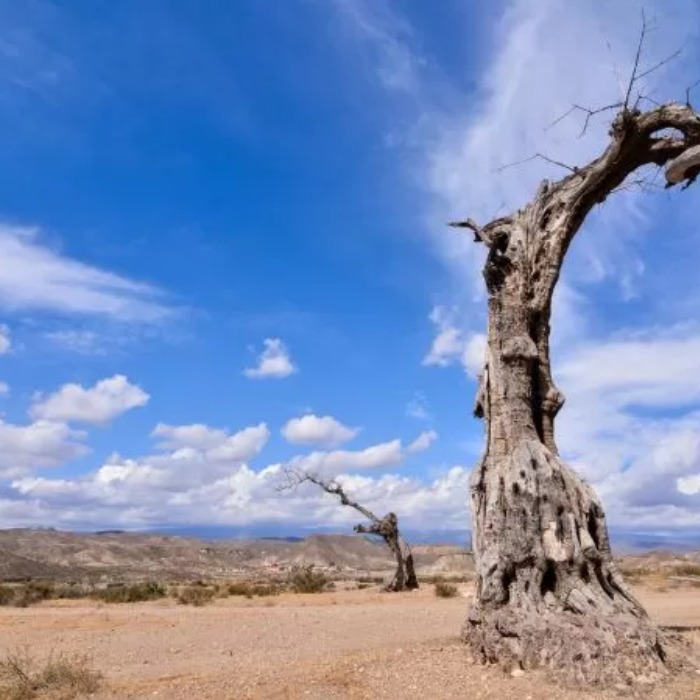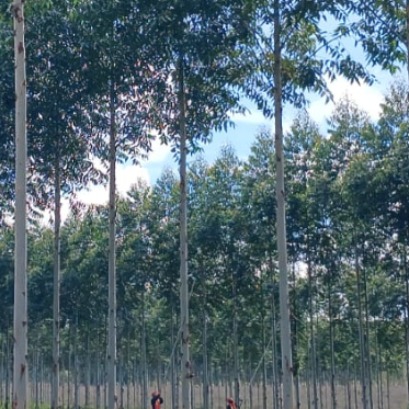
Why do specialists recommend not eliminating the dead trees from forests?
I discovered why the trees should not be cut off once they die.
Eliminating dead forest trees may seem a logical measure to keep the other plants and species inside healthy ecosystem, but numerous ecology specialists suggest otherwise. The experts suggest that their presence contributes to a more balanced planet, therefore, therefore, therefore, They pose their non -elimination. Why do they recommend not eliminating the dead trees from the forests? Eliminate the dead forest trees may seem like a sensible measure to maintain order, but in reality, these trees play a crucial role in the ecosystem, according to National Geographic. Dead trees become important habitats for a variety of animal and plant species. Dead trees, both foot and fallen, offer refuge and food to various organisms. Fungi, for example, play an essential role in decomposing wood, which facilitates the decomposition of nutrients and favors the proliferation of other species. This decomposition also contributes to the recycling of nutrients in the soil, which is vital for the growth of new plants. Ecology of the University of Illinois. In fact, currently, it emphasizes dead wood and logs in forested areas, the specialist points out. In addition, dead trees act as carbon sinks, capturing carbon dioxide and helping to regulate the climate. By allowing these trees to decompose naturally, it contributes to the reduction of greenhouse gases and the stability of the ecosystem is favored. Therefore, maintaining dead trees in the forests not only benefits local biodiversity, but also that It also has positive implications for the environment of the planet Earth. What do you do with dead trees? When it comes to handling dead trees in forests and gardens, experts recommend keeping them whenever possible. Some guidelines to conserve them are. Children, campsites or roads, it is advisable to remove them to avoid accidents ? In urban environments, the decision to conserve or remove a dead tree depends on the specific context. Trees affected by diseases or that can be structurally insecure should be carefully evaluated ? Although dead wood does not contribute significantly to rapid fire spread, its presence can complicate fire fighting. In fire -prone areas, proper management is essential. Large dead trees have a very, very important role to store carbon, provide habitat and recycle nutrients, mentions David Lindenmayer, forest ecologist and teacher of ecology and conservation biology in the National University of Australia.
IT MAY INTEREST YOU
 Paraguay | The plantations became instruments of territorial development and the generation of decent employment, INFONA highlights.
Paraguay | The plantations became instruments of territorial development and the generation of decent employment, INFONA highlights.
Plantings in different phases, control of ants and weeds, pruning and thinning, mechanized harvest, technology applied to the field and complete integration of the production cycle were part of the CREA Forestal proposal in its Technical Update Conference – JAT Forestal 2025. The event took place on Friday, November 14, at Estancia Ñemity, located in San Juan Nepomuceno, Caazapá, where agricultural producers, technicians, contractors, students and companies in the sector met to observe the forestry business of the future in action.
 They promote research in pine resins from the NEA
They promote research in pine resins from the NEA
The forestry industry is one of the most important sectors in the economies of Misiones and Corrientes. Thousands of hectares of pine supply the paper, pulp, boards and sawmill industry. Pinus elliottii, one of the species established in the region, in addition to providing wood, is used to produce resin, a non-wood forest product with high demand in the chemical, pharmaceutical and cosmetic industries. In 2\024, resin extraction of approximately 52,6\0\0 tons was achieved from approximately 18,\0\0\0,\0\0\0 trees in production, generating income and jobs with high expansion potential.
 The second largest wetland in South America is located in Argentina: what is it?
The second largest wetland in South America is located in Argentina: what is it?
Argentina has national parks that place it in a unique position within South America, competing with 300 others. Which is the largest? South America is home to more than 300 national parks, but many go unnoticed. There are extensive wetlands that have been the subject of major ecological restoration projects, to coastal mountains with deep indigenous heritage. Today we tell you the case of one located in Argentina.





















